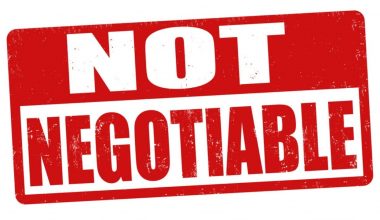Getting a grip on procurement spending is a difficult task. The competitive landscape is continually evolving, and third-party vendor risk is becoming more common. Getting the best price—or the best experience—doesn’t always imply getting the lowest price. How can you ensure that you receive the things your company requires at the proper price without losing quality or exposing your company to liability? Strategic sourcing is the answer. This comprehensive method assists businesses in avoiding the problems of race-to-the-bottom pricing while realizing the benefits of partnering with chosen suppliers.
This post will give you the knowledge you need to adopt a strategic sourcing management process in your procurement.
What is Procurement?
To understand how strategic sourcing works, you need to be familiar with the procurement process and the concept of sourcing in general.
Procurement and purchasing are synonymous, and the corporate responsibilities of this department have evolved over time. As recently as the 1980s, procurement departments were only regarded as “order placers,” with a relatively straightforward duty that did not necessitate much strategic planning. By no means was it a cerebral process.
Procurement began by issuing purchase orders with no regard for achieving company objectives. Purchasing technique is now described as a transaction-oriented function and a subset of procurement.
Procurement is considered a corporate management role that involves a number of issues, including:
- Choosing potential suppliers
- Contracts and payment arrangements are negotiated.
- Enforcing regulatory compliance obligations
- Contract execution
It is the umbrella word for the two main elements of the acquisition process, purchasing and sourcing.
What is Sourcing?
Sourcing falls under procurement, just as purchasing does. This is the process of finding a “source” for your goods and services. A straightforward sourcing strategy entails locating the most cost-effective supplier of items. It is carried out in a range of domains and for a variety of business purposes. Supply chain management is one of the most prevalent ways of sourcing.
What is Strategic Sourcing?
Strategic sourcing is a type of sourcing that entails employing several tactics while sourcing items or services. Strategies are chosen depending on the real-time circumstances of each acquisition and are determined by criteria such as expenditure value, category risk, and supply market character.
Among the several sourcing tactics are crowdsourcing, outsourcing, global sourcing, and low-cost nation sourcing.
Why is Strategic Sourcing Important?
Strategic sourcing enables businesses to discover suppliers who satisfy standards while posing little risk at the lowest possible cost. Companies can also create comprehensive profiles of potential suppliers and compare them as needed.
Suppliers are viewed as valuable partners in strategic sourcing. It assists businesses in maintaining long-term supplier relationships.
This method allows businesses to pool their purchasing power. Enterprises can thus secure a lower cost of ownership and restrict the risk elements in their supply chain, making the supply chain more sustainable.
What are the Benefits of Strategic Sourcing?
#1. Increased Savings
Greater cost reductions are the immediate practical benefit of strategic sourcing.
#2. Changing Sources and Business Goals
When an organization’s sourcing strategies/activities are aligned with its organizational goals and objectives, business performance and risk mitigation capabilities improve.
#3. Supplier Improvement
When a company can identify its high-value suppliers, it instantly obtains significant cost reductions while maintaining product or service quality.
#4. Long-Term Supplier Relationships
This method assists businesses in developing long-term commercial relationships with their suppliers. A long-term relationship not only saves time and resources, but it also leads to improved supplier performance.
Best Practices for Strategic Sourcing
- Use eRFX events and eAuctions – Sourcing enables buyers to automate and standardize the creation, distribution, collection, and storage of sourcing events, resulting in better efficiency when compared to manual event management.
- Use contract management software – Contract management software can assist you in managing any number of contracts by merging preferred supplier details from eSourcing events with the use of custom fields to capture contract-specific data. Supplier agreements might roll over into the next year if you don’t have the necessary management tools, trapping you into substandard pricing and service terms.
- Track spending and saves – Rather than depending on spreadsheets to measure and report savings, a savings tracker system can help you simply produce saving projections and tracking papers, and deliver reports that demonstrate your deliverables and value.
What are the Steps to the Strategic Sourcing Process Like?
Step #1: Profile the category
Define the spend category and its commodities. What is the current amount in use? Who are the users, and where can they be found? What processes are employed, and who is involved in the supply chain?
Step 2: Analyze the supply market to identify possible global and local providers.
Examine the product or service’s cost components and the supplier’s marketplace for risks and possibilities. Variables such as major raw material pricing, labor, and transportation must be priced, as well as the cost elements of the suppliers.
Step #3: Create a strategy
The next step is to decide where you will buy while reducing risk and cost. Alternative suppliers and market competitiveness must be evaluated with stakeholders on board.
Step #4: Determine the sourcing process
Next, a company must devise a sourcing strategy. The most usual process for obtaining bids is a Request for Proposal, which would include product/service specifications, delivery and service criteria, pricing breakdowns, and legal and financial parameters.
Step #5: Negotiate and select suppliers
As discussions begin and viable bids are chosen, suppliers will request explanations and further information as needed. Conduct numerous rounds of talks with your suppliers before picking them according to your company’s approval process.
Step #6: Implement and integrate
Inform the successful suppliers and include them in the implementation process. Improvements to specifications or processes, as well as changes in delivery or service needs, will be part of your sourcing plan.
Step #7: Benchmarking and tracking outcomes
The final phase is the commencement of a continuous cycle that begins with benchmarking the current state of the commodity or category, monitoring the results, and ensuring that full value is obtained. A company then returns to Step 1 to re-evaluate the supply market and restart the process.
What Is the Difference Between Strategic Sourcing and Sourcing?
The primary distinction between strategic and regular sourcing is that strategic sourcing has evolved into a dynamic process, whilst general sourcing has remained straightforward. It just considers supplier prices. The idea is to find something with the lowest total cost of ownership.
Cost is simply one element of the equation in strategic sourcing. It is one component of a corporate needs hierarchy. A sourcing team takes into account a number of different factors that may impact your connection with the “source,” i.e. supplier. This includes the assurance of factors such as:
- Quality
- Supply
- Service
- Innovation
- Compliance with regulations
None of this should ever be surrendered only for the sake of cost. That is the general conceptual process that underpins strategic sourcing.
Procurement vs. Strategic Sourcing
Procurement is not the same as strategic sourcing. The procurement operations consist of tactical, day-to-day transactions such as issuing purchase orders to vendors. Strategic sourcing, on the other hand, encompasses a wide range of sourcing activities, such as:
- Supplier expansion
- Strategic thinking
- Contract bargaining
- Models of outsourcing
- Infrastructure for supply chain management
Procurement Terminology’s Nuances
Procurement jargon can be perplexing. It’s difficult to grasp the subtleties of the naming convention. There are significant differences between the terms “procurement” and “sourcing.”
For example, most businesses consider buying to be strategic rather than tactical. Whereas sourcing is regarded as a lengthy process. This distinction is emphasized by the fact that the KPIs (key performance indicators) for a procurement activity are vastly different from those for sourcing.
These distinctions also apply to other procurement-related terminology such as “strategic sourcing” and “supply chain management,” which, while all referring to places along the same process continuum, should never be used interchangeably. The techniques, dynamics, and implementations all differ significantly.
All of these activities are interconnected corporate tasks that are related to a company’s prospective and existing supplier network.
Supply Chain Management and Strategic Sourcing
Procurement and supply chain management are inextricably linked, as is strategic sourcing. While procurement is the process of obtaining the commodities and services required by a firm, supply chain management is the administration of the infrastructure and services required to obtain those items. A supply chain includes everyone (internal or external) involved in putting a product or service into the hands of a consumer.
In general, the word “supply chain” refers to the post-contractual phase of the procurement process. This covers logistical concerns as well as matters pertaining to all suppliers, from Tier 1 to Tier 3.
While procurement is concerned with all pre-contractual analyses and supplier discussions prior to the start of the contract, supply chain management is concerned with what happens AFTER the contract is signed.
So, can you see how they are linked but not the same?
Procurement experts are now considering strategic sourcing to optimize supply chain management decisions in order to gain a competitive advantage.
One important goal of strategic sourcing is to improve the buyer-supplier relationship. The idea is to use these encounters to gain a better understanding of a supplier’s genuine capabilities and what they can offer your company. An organization achieves this by combining and supplementing core capabilities with multiple supply chain partners.
The transition of major enterprises to strategic sourcing has been a key change agent in supply chain large fleet management. It necessitates a transformation in areas such as:
- Vehicle sourcing
- Contract discussions
- Choosing a Supplier
- Service level agreements (SLAs)
- Fleet supplier evaluations
- Fine-tuning supply chain management
Understanding these processes well will assist the procurement function and fleet management in achieving a common aim. That is arbitrary and habitual purchasing by stakeholders and field operations. It promotes the innovation required to achieve the best value from assets.
When is Strategic Sourcing Beneficial?
While strategic sourcing has many advantages, it is not appropriate for every procurement project. After all, it is sophisticated, and at times time-consuming, process. Some tasks just do not necessitate that level of detail. As a result, it’s critical to strike a balance between the value of the item being acquired and the time commitment required to complete a strategic sourcing project.
Strategic sourcing is appropriate for the following projects:
- High worth, properly defined, and critical to the company
- Highly specialized and complex
- The stakes are high, and this is part of an organizational restructuring project.
Situations involving strategic sourcing include the following:
- Customer relationship management software selection
- Financial service or employee benefit evaluation
- Choosing an architect for a new construction project
Scenarios that lend themselves better to alternate procurement methods
Because of the level of detail and time required for strategic sourcing, some circumstances will simply not be a good fit for the process. Here are a couple of such instances.
- Finding a project management solution for a single department is an example of a low-value, low-risk procurement.
- Gathering bids to match policy requirements when there is already a strong preference for a specific provider
- Try an RFP light for a normal, transactional purchase of office supplies.
- Consider a request for information (RFI) while gathering ideas, pricing, and arranging a future purchase.
- Using a request for qualifications (RFQ) to find the best expert to consult on a marketing effort.
- Getting the best deal on a simple transaction – Consider a request for quotation (RFQ).
Who Takes Part in the Strategic Sourcing Process?
A variety of employees and departments within your firm will be involved in your strategic sourcing initiatives. Typically, the procurement department owns and manages the process. To foster specialization in this area, many firms have lately developed strategic sourcing manager jobs.
As with most procurement projects, other parties will inevitably be involved. For example, in the case of a CRM procurement project, stakeholders from sales, marketing, and operations would be involved. In addition, legal, financial, and information technology are frequently engaged.
Finally, practically every strategic sourcing effort will necessitate executive approval and evaluation.
Strategic Sourcing: How to Make the Transition
One procurement initiative at a time, strategic sourcing is implemented. It may feel like a significant change at first, yet elements of the process will feel familiar. Indeed, strategic sourcing and traditional procurement share a number of principles.
You’ll progress through the strategic sourcing cycle as you find purchases or current vendor relationships that are a suitable fit for the approach, beginning with spend analysis, then supplier selection, and ultimately continuing engagement.
Strategic Sourcing Tools
Strategic sourcing software is essential for companies that prioritize procurement savings. These systems, which are often cloud-based and collaborative, are designed to centralize and automate strategic sourcing, increasing efficiency and efficacy.
Features of strategic sourcing software may include:
- Project Management
- Tracking your savings
- Digital RFP distribution and evaluation
- RFP template repository
- Data gathering and analysis
- Collaboration both internally and externally
- Management of vendor relations
- Management of the categories
- Marketplace for suppliers
Conclusion
Finally, strategic sourcing is the process of gathering information, collaborating with the best providers, and assuring continuing procurement value and efficiency. It goes beyond simple transactional purchases and focuses on the big picture – how to assist the firm to achieve its goals.
Similarly, vendor alliances formed as a consequence of strategic sourcing assist in navigating obstacles as they emerge while increasing outcomes and lowering costs.
The intricacies of strategic sourcing will, of course, differ from one firm to the next. The process’s foundation and aims, however, remain unchanged. Fortunately, you may begin your strategic sourcing efforts with one project at a time.
Related Articles
- SOURCING: Definition, Examples, Outsourcing, and Complete Guide
- PROCUREMENT MANAGEMENT SYSTEM: Types and List of Top Software Options
- STRATEGIC SOURCING PROCESS: Detailed Steps to Strategic Sourcing
- Project Procurement Management: Detailed Guide To The Procurement Processes
- Outsourcing: Definition, Benefits & Examples of Outsourcing Companies






